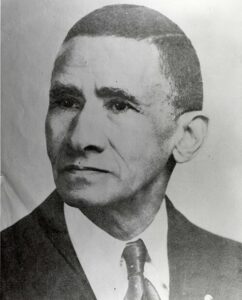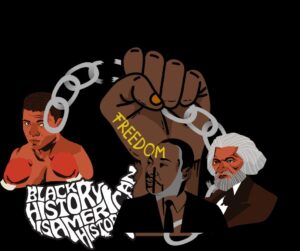Once upon a time in Black Entrepreneur History was an African American man named Garrett Augustus Morgan who became a serial inventor, most popularly known for inventing the first ever gas mask, and an entrepreneur, founding and running many black-owned businesses, including founding a Black Country Club and resort.
Born on March 4, 1877 in the Southern city and state of Paris, Kentucky to a formerly enslaved father named Sydney Morgan and an African American mother named Eliza Reed.
Garrett Morgan’s paternal grandfather was a white, married slave-owning Confederate colonel named John Hunt Morgan who had sex with a Black woman whom he had enslaved, who would then give birth to Garrett’s father, Sydney, who would be born into slavery due to the womb law.
The Womb Law - no matter who the father is, if the mother is enslaved, the child will be born enslaved.
Garrett Morgan’s education was very little, however, he had a natural gift for figuring out how things worked. He was mechanically inclined. It was when he was a teenager that he decided to move to Cleveland, Ohio, and it was there where he would end up working with sewing machines as a sewing machine mechanic, using much of the money he earned to purchase a private way to educate himself – one-on-one tutoring.
While working, he learned the ins and outs of the sewing machine, until one day, he knew how to make the sewing machine better! It was with his invention and patent that the sewing machine was updated and evolved into a better machine altogether. Therefore, Garrett, now the inventor, opened his own black-owned repair business as well as a Tayloring shop.
This was where Garrett’s mind began to spin for another invention!
He produced an oil to keep the fabric from burning under the needle of the sewing machine, but that same oil also made the fabric straight. He wondered if it would do the same for hair, so he started experimenting on his own hair. It was a success which led him to launching his next business – the G.A. Morgan Hair Refining Company at 5202 Harlem Avenue, targeting the hair oil to African Americans as a new product to use to style their hair in a different way.
He had his own line of black hair care products, from dye to even a comb he invented, but his hair straightener was called The Morgan Hair Refiner, which, according to an ad in the Cleveland Gazette of April 1914, was free of grease, needed no heat, unaffected by water and safe if used as directed.
With the money he earned from his businesses, especially the G.A. Morgan Hair Refining Company, he was able to reinvest that money back into himself as an entrepreneur. In 1914, he invented another item that would change the life of thousands more people up through this very day- the first ever GAS MASK, or called at the time a Safety Hood and Smoke Protector (October 1914 patent), which made it much safer to breathe in heavily polluted areas, whether it be smoke or chemical.
Garrett’s Gas Mask even became the original foundation for the later updated and refined gas masks used in World War I and is still the same foundation for much personal protective equipment used today. Basically, Garrett Morgan’s invention was the start of it all!
However, there was a drawback to his invention due to the racist climate of America at that time, especially in the South. Popularity grew for the invention, but the growth was slow moving. He knew why. Garrett wasn’t a white man. He had an answer for that though.
Garrett decided he wouldn’t present himself as the inventor of the gas mask, but instead, he would use a white man willing to present himself as the inventor. Garrett would pose as the Native American sidekick from who traveled with him. The trick worked! Garrett would do all the demonstrating of the “gas mask” while under the guise of a name he gave to himself – Big Chief Mason – enter into a tent of gases and come out unharmed, proving that the device worked. The public loved it.
There was an immediate rise in popularity of the breathing device for anyone who needed it, from firemen and all those who worked under unhealthy atmospheric conditions, even the military. His income soared, but it was when the lives of two men in Lake Erie needed to be saved from an explosion in 1916 that things went wrong. He was found out.
The Heroic Rescue at Lake Erie Tunnel Explosion
Garrett and his brother put on the breathing devices to save the lives of the two men and the several others who went in to rescue them and failed. Everyone watched as Garrett and his brother put on his breathing masks to go into all the smoke. Garrett and his brother were the first ones to attempt the rescue and actually succeed, carrying all the fallen men to safety utilizing Garrett’s Gas Mask.
The public then quickly figured out that the gas mask wasn’t a white man’s invention at all, but a black man’s.
Support for the device dwindled tremendously. White people simply didn’t want to support a Black invention, no matter how well it worked. Even though there were orders for the gas mask all over the United States of America, they canceled their orders when they saw his real picture and found out his real race.
It was so bad that even though Garrett and his brother performed the heroic rescue of the workers during the awful Lake Erie explosion, they didn’t get credit. The white owned newspapers didn’t want to acknowledge them or award them, so they lied and gave the credit and a hero’s award to others who were white.
This was a moment that couldn’t keep Garrett down because being born an African American, he knew he had to keep going, despite racism and lies. He knew the truth, African Americans knew the truth and even white people knew the full truth, no matter how they denied it.
He bought a car, and ended up the first African American in Cleveland, Ohio to even own a car! With Garrett, owning a car meant that he was going to learn how it worked, and he did just that. This led to his next invention, the Friction Drive Clutch.
Then in 1923, he invented the new and improved traffic signal, called the Folding Traffic Light that came complete with a warning light, alerting drivers to slow down and prepare to stop. This would make car accidents less frequent and more avoidable at intersections.
The reason it was called Folding Traffic Light is because it had arms that turned up, revealing STOP on all 4 sides with a red light as it gives a quarter turn. When it is complete, the folding arms come down. The Folding Traffic Light also made a gong sound to assist traffic patrolmen.
He patented his invention in three countries, Canada, the USA and Britain, later selling it for $40,000 to GE. That amount today is equivalent to about $600,000 in the year of 2020.
He was a successful Black man, and it was with his success that he not only provided for his family, but he consistently put money back into the African American community by donating to HBCU’s (Historically Black Colleges and Universities), joined the NAACP and he was also a member of the Cleveland Association of Colored Men.
Meanwhile, he founded an African American newspaper called the Cleveland Call in 1920. He also founded a Black Country Club since Black people were excluded from the others. His Black Country Club was called the Wakeman Country Club, one of Garrett’s largest investments – real estate – with the goal of African Americans having a full resort and village where they could relax and have fun, a place of their own where they were welcome.
The breakdown of Wakeman Country Club[5] resort and village is as follows:
- Located on Chenango Road, just outside of Wakeman at Wakeman Heights
- a full subdivision with over 200 lots – 30 by 80
- adjacent to Vermillion River and Morgan’s River
- Lots for sale for $60 (equivalent of $700 in 2020), buyers could make down payments and pay $5 per month until complete and buy more than one lot at a time.
- Dancehall
- Riding stables
- Restaurants
- Boxing Ring and Training
Marriages
His first marriage was to a Black woman named Madge Nelson on August 3, 1896[3]. He was twenty years old, and she was 18. In this year, the census listed his occupation as a fertilizer.
His second marriage was to a white woman, a native of Cleveland, Ohio named Mary W. Hasek of Czechoslovakian descent on September 22, 1908 in the state of Ohio[2]. He was 28 years old and she, 23. She was a dressmaker, and they worked together in the shop. They had 3 children by the 1930 census named John P, Garret A, and Cosmo H. The children all worked in the family business, the oldest John P, being the bookkeeper. All the children, though biracial, were listed as Negro on the census which was common and totally accepted because of the “one drop of black blood” social law.
The ONE-DROP RULE was accepted all the way through the 20th century which states that any person with only ONE DROP of BLACK BLOOD in his or her ancestry will in fact be considered Black, socially and legally. However, not federally law in the USA, it still is socially accepted by many people, both white and black, although there are people who are 3/4s white and only 1/3 black, depending on what shows more on their outer appearance and what ethnic group the person identifies with, they are normally free to choose what ethnic group they claim within their own genetic make-up, such as in the case of celebrity actress Halle Berry or singer Mariah Carey. In the 21st century, some choose biracial.
Death
Garrett Morgan passed away on July 27, 1963[1], and after his life of inventions and entrepreneurship with only an elementary school education and tutoring, he helped thousands and continues to help thousands today.
He was buried in Lake View Cemetery in Cleveland, Ohio[1]. His wife Mary is buried beside him in a conjoined headstone. She passed five years after Garrett.
Historical accounts have been updated and gone back to restore who really rescued the men that day in the Lake Erie tunnel explosion – giving credit to the now deceased African American hero – Garrett Morgan and his brother.
Little Known Facts About Garrett Morgan
1909 – According to the Plain Dealer newspaper, he was superstitious. When he got his automobile tag, it was on the 13th of the month. He had it exchanged because he admitted to being superstitious of the number because he said it was “unlucky” for him and didn’t want to drive with that automobile tag.
Sources
[1]Ancestry.com. U.S., Find A Grave Index, 1600s-Current [database on-line]. Provo, UT, USA: Ancestry.com Operations, Inc., 2012.
[2]Cuyahoga County Archive; Cleveland, Ohio; Cuyahoga County, Ohio, Marriage Records, 1810-1973; Volume: Vol 70-71; Page: 34; Year Range: 1908 Apr – 1909 Feb
[3]Cuyahoga County Archive; Cleveland, Ohio; Cuyahoga County, Ohio, Marriage Records, 1810-1973; Volume: Vol 44-45; Page: 35; Year Range: 1896 Jul – 1897 Dec
[4]Year: 1900; Census Place: Cleveland Ward 12, Cuyahoga, Ohio; Page: 7; Enumeration District: 0048; FHL microfilm: 1241253
[5]Norwalk Reflector





More Related Stories
Isaac Scott Hathaway – Founder of Isaac Hathaway Art Company & Designer of First African American Coin
James Wormley – Founder of the Most Expensive Hotel in Washington D.C. in 1800s – the Wormley Hotel
William E. Matthews – Wealthy Financial Broker & Civil Rights Leader of 1800s